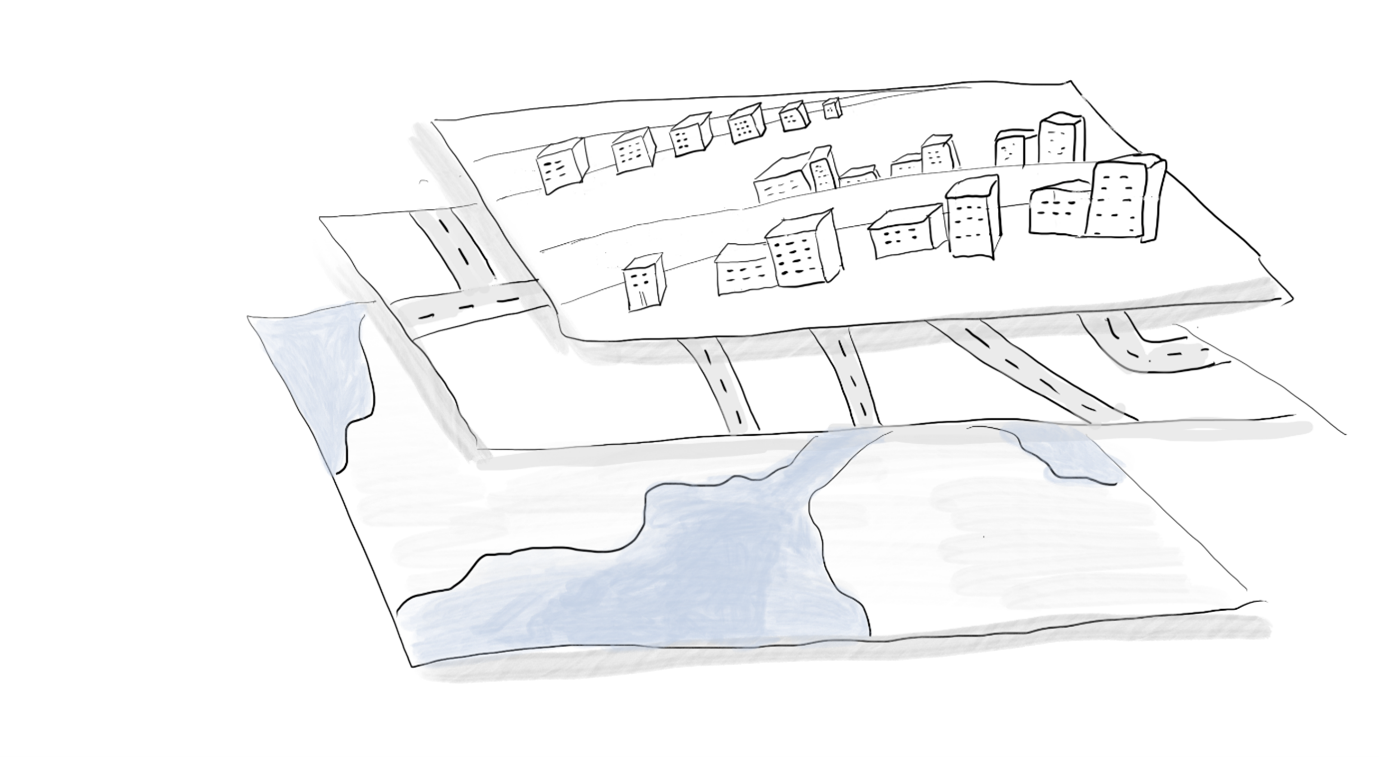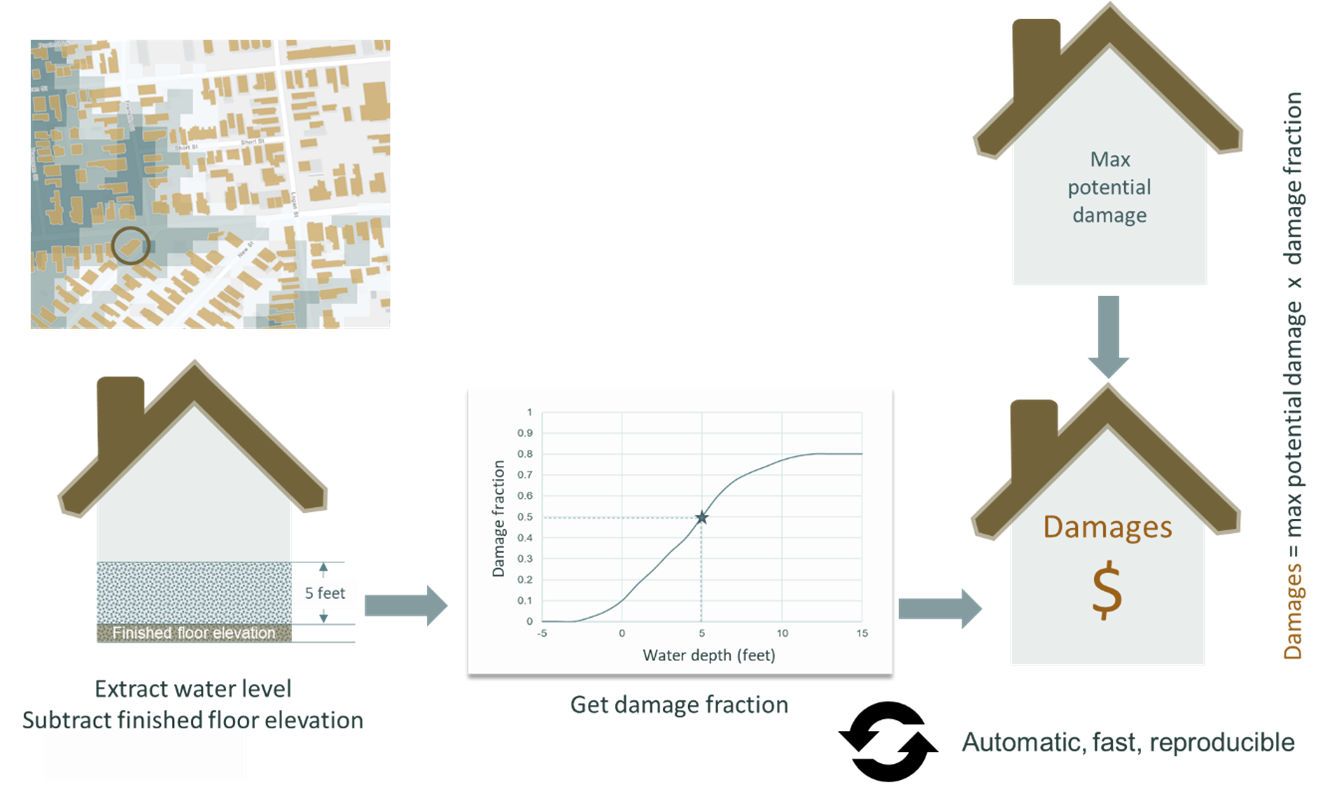Delft-FIAT: A fast and flexible flood impact assessment tool
When it comes to floods, decision-makers have tough choices to make. Which interventions should they invest in, and when? How long will those interventions maintain a certain level of service for the community? Which intervention should have priority? Are interventions impacting different sectors of the community equitably? Delft-Fiat is a fast, flexible, Python-based tool to rapidly assess direct economic impacts to buildings, utilities, and roads for user-input flood maps.
Floods are the costliest natural disasters, and flood risk is increasing as sea levels rise, storm frequencies increase, and populations and economies grow, the risk of flooding is increasing. Many communities are actively engaged in preparing for a flood-resilient future. This preparation requires an understanding of the current vulnerability and risk, how that vulnerability and risk are changing as we move into the future, and how interventions will reduce that risk over time.
Why are flood impact assessments needed?
Flood and damage modeling provide information to decision makers that can help them prioritise and plan interventions. Flood modeling provides information on how certain events will cause flooding in the community, now, in the future, and with or without interventions like levees, sea walls, or drainage pumps.
Damage modeling translates flooding into economic costs to buildings and roads, making it clearer which interventions reduce the costs most effectively.
What is Delft-FIAT?
Delft-FIAT is a fast, free, Python-based tool developed and continuously improved by Deltares to rapidly assess direct economic impacts to buildings, utilities, and roads for user-input flood maps.
Fast impact modeling removes traditional bottlenecks in climate adaptation planning, making it possible to (1) understand the effectiveness of adaptation options and (2) quantify changes in damage and risk as climate and socio-economic conditions change.
Fast and automated
Delft-FIAT is fast and can be automated. It can be run many times using a script or a custom-built user-interface. This allows for hundreds even thousands - of automatic damage calculations.
This makes it possible to evaluate future risk caused by changing drivers like sea level rise, storm frequencies, precipitation increases and growing populations and economies. It also makes it feasible to evaluate the effectiveness of interventions by assessing flood damages - now and under changing conditions (a combinations of) interventions, like drainage system improvements, levees, sea walls, drainage pumps, home elevations, or floodproofing.
Delft-FIAT simulations typically take about one minute per scenario, and it can be run in batch mode to automatically iterate over user-requested scenarios.
Flexible
Delft-FIAT has a flexible architecture. That means that a user is free to use the software in different ways without needing to make any changes to the code. For example, a user may want to try out different depth-damage functions, or include a different class of damage than the traditional structure and content damages. Delft-FIAT allows for this.
Road damage, road outages, business interruption - these can all be included. Any damage type that can be described with a depth-damage function can be analysed in Delft-FIAT. Exposure data can easily be modified, and hazard data - the flood maps - can come from any source.
Customisable
Delft-FIAT is also customisable. It can be connected to a tailored user-interface to make a custom damage modelling tool for less-technical users. It can be connected to custom-designed viewers, or existing tools like PowerBI or ArcGIS Online. Delft-FIAT can connect with other software, like flood-modeling software, or be built into an operational forecasting system.
Delft-FIAT can be combined with tailored scripts to answer tailored questions. For example, what is the impact of uncertainty in the finished-floor elevation of the buildings? What is the effect of uncertainty in the damage functions? The user can do a sensitivity analysis, or even integrate the uncertainty in these inputs into the damage estimate.
Another example is estimating tipping points - the point in the future when an adaptation intervention is no longer meeting levels of service. By running Delft-FIAT over future conditions, these tipping points can be derived.
A user can even select which metrics are of interest in determining levels of service, such as: expected annual damage, number of flood houses in the 10-year flood event, or affected houses with income below the poverty level.
Where has Delft-FIAT been applied?
Delft-FIAT has been used all over the world, in both data-rich and data-scarce communities. It is the backbone of the Dutch national damage model, and has been used to support and enrich projects in the U.S., Australia, Asia, Africa, Europe, the Caribbean, Central and South America, and small island developing states.
It is also a component of FloodAdapt, a decision-support tool to support and accelerate adaptation planning, which is currently being applied in pilots in the U.S., Europe, Asia, and Africa.
Upcoming developments
The code base of Delft-FIAT is currently being restructured to increase performance and flexibility and will be released as open-source software upon the completion.
New features in development in 2023 include:
- Automatic generation of a user-customised summary report for each simulation, including metrics like:
- # homes damaged
- # hospitals impacted
- Length of roads inundated above a user-specified threshold
- Calculating equity weighted damages to support equitable benefit-cost analysis
- Calculating well-being impacts, to support more equitable evaluation of adaptation options
- Creation of a Delft-FIAT model-builder to facilitate faster and easier set-up and modifications of Delft-FIAT models





